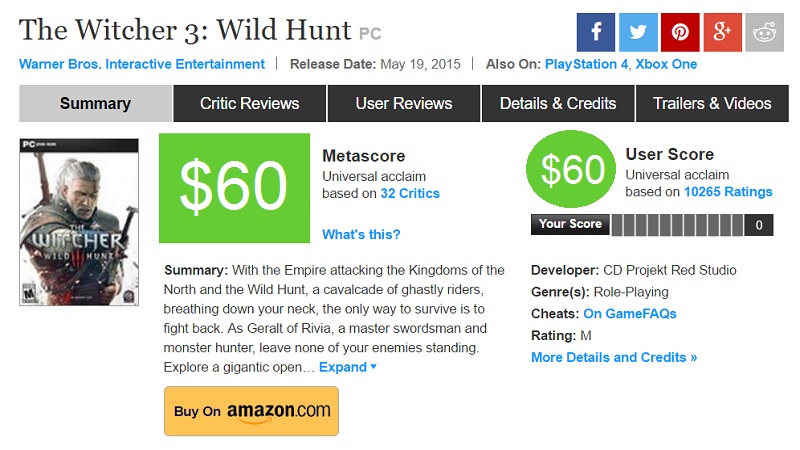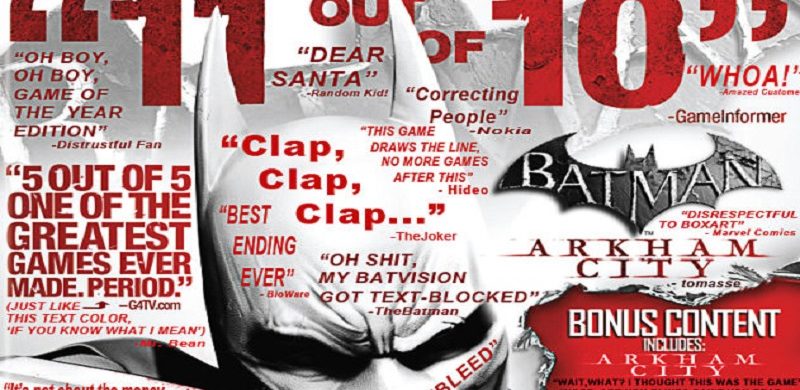Do you ever hear a half-thought that you dismiss initially but then have it sit in the back of your head and germinate?
I did recently: what if we rated videogames not as a percentage out of a hundred, but by they’re worth in a hard dollar value? What if instead of arbitrarily awarding stars or percentages, we gave you clear guidance as to what the game is worth?
Here’s an example: while The Witcher 3: Wild Hunt isn’t a perfect game [You’re fired – Ed], and wouldn’t score 100% universally, it’s still amazing and is well worth the R600 developers CD Projekt RED were charging for it when it launched.
So we would rate The Witcher 3: Wild Hunt as just “R600”. An important point to note here is that it doesn’t equate to 100% or a perfect ten score or anything like that. All this new system would propose is that you’re getting your money’s worth and would not feel cheated.
Let’s look at something else that’s the polar opposite. Necropolis is a recently-released rogue like/lite that is absolutely littered with unforgivable problems. When I reviewed it I gave it a paltry 20% overall. If I could go back with a new system, I would have scored R0. Only play it if it’s free, and even then be wary of data costs for the download.

Then, right in the middle we have something like Far Cry Primal which is very far from being a bad game, but ultimately ended up being a middling entry in the franchise and has been mostly forgotten a few months on.
Using this new system I’d probably say that Far Cry Primal is a R300 game. What this means in the real world is that, when the price of it inevitably drops to R300 or lower, you can buy ensuring that you won’t feel like you’ve been robbed. It’s just a game worth R300 and no more.
And that’s where the value of this system comes into play. Percentages, scores out of ten, different amounts of stars… all of these mean very little when you’re staring at a game deciding whether or not to buy.
Instead we would have hard and fast dollar amounts that could be seen as binary. If a game is being sold at a price critics and other players have deemed an acceptable price, then it is worth the buy. If it’s charging more, you know to walk away.
The problems that remain
Trying to uproot an industry where, sometimes, people’s livelihoods depend on a game’s score on Metacritic, introducing a new way to do things would likely cause more trouble than it’s worth.
Of course, things may get lost in translation. Overseas, you’d probably talk about a “$60 dollar game”, as that’s the going rate for a new title in the US. But those games usually sell for between R600 and R1 000 here depending on the title, who makes it, where it’s sold, and what platform. A game worth R600 on PC might equate to R1 000 on a console. Which could be confusing..
I’m not suggesting we abandon percentages and review scores altogether (hell, if I liked the idea so much I could do it for my reviews) but I think it’s useful as we move away from the traditional way of reviewing games and start looking at them as what they really are: one person’s opinion on it.
The rise of gaming personalities on YouTube and Twitch has proven that people value this format, so why don’t we consider a new review system to support that?

